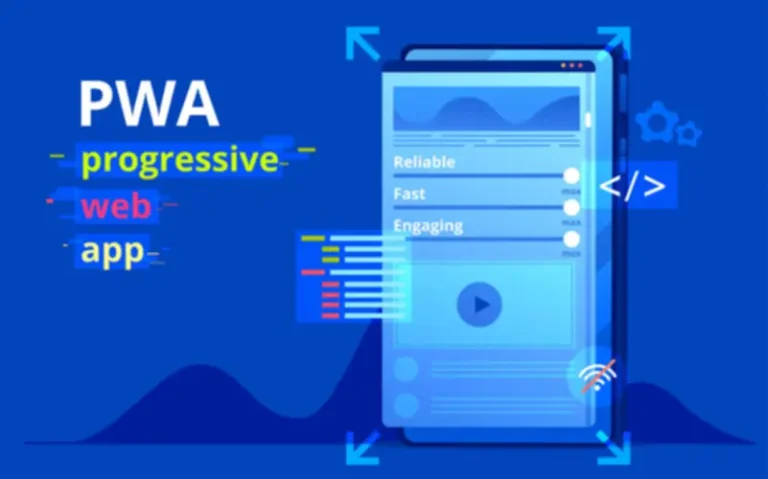Advantages And Drawbacks Of Distributed Methods
The outline of the distributed computation course of on this chapter is explained in Fig. In computer %KEYWORD_VAR% science, with the fixed networking and middleware improvement, scheduling in distributed processing systems is amongst the subjects which has gained consideration within the last twenty years. Casavant and Kuhl [14] present a taxonomy of scheduling generally objective distributed systems.
What Are Some Great Advantages Of Distributed Computing?
The benefit of layered architecture is that it retains things orderly and modifies every layer independently without affecting the rest of the system. Discover how one can operate public cloud infrastructure in varied places with distributed cloud. Run the data facilities you want—from any cloud providers, colocation facilities or on-premises environment—and handle it all from one control pane. Distributed computing sorts are categorized in accordance with the distributed computing structure each make use of. This is among the great advantages of using a distributed computing system; the system could be expanded by adding more machines. The different vital benefit is elevated redundancy, so if one pc in the community fails for whatever reason, the work of the system continues unabated, regardless of that time of failure.
Distributed Computing Vs Cloud Computing
The capacity to make the system reliable (because there could be multiple copies of sources and companies spread around the system, faults which prevent entry to one reproduction occasion of a resource or service can be masked by using one other instance). The key distinctions between edge computing and distributed computing are shown in the following desk. So the interactive distributed model (Fig. 1.4), which is growing in the implementation, is our next work. In the last many years, after Kwok and Ahmad’s work, different surveys and taxonomies for solutions to the scheduling drawback for parallel techniques have been developed. Most of these works focus on heterogeneous distributed techniques [15], which Ahmad and Kwok thought-about as one of the most challenging instructions to comply with [3]. It is important to watch that the idea of a message is a basic abstraction of IPC, and it’s used either explicitly or implicitly.
See Additional Guides On Key Software Program Growth Topics
- Whether connectivity is statically determined or determined dynamically primarily based on the configuration of the run-time system and/or the application context.
- These machines then talk with one another and coordinate shared resources to execute tasks, process data and solve issues as a unified system.
- It’s also liable for controlling the dispatch and management of server requests all through the system.
Concerning scheduling in such techniques, the authors present a short taxonomy that features classifications relating to application mannequin, scope, knowledge replication, utility perform, and locality [19]. The abstraction of message has performed an important function in the evolution of the models and applied sciences enabling distributed computing. It encompasses any form of data illustration that’s limited in measurement and time, whereas this is an invocation to a distant process or a serialized object occasion or a generic message. Therefore, the term message-based communication mannequin can be utilized to refer to any mannequin for IPC mentioned on this part, which does not essentially rely on the abstraction of data streaming. This architecture partitions the techniques into two tiers, which are positioned one within the client component and the other on the server. The consumer is liable for the presentation tier by providing a user interface; the server concentrates the appliance logic and the information store right into a single tier.
What Are Some Nice Benefits Of Distributed Computing?
In a distributed computing system, a job is commonly carried out by numerous nodes that work together with one another. Resources are divided across a quantity of nodes in distributed computing, which may improve performance and scalability. On the other hand, centralized computing refers again to the scenario when all pc sources are centralized in one place, usually a single server. The server serves as a bottleneck on this method, which may cause performance problems and limited scalability.
Distributed models can be categorized into simple and interactive models, illustrated in Figs. Wieczorek et al. [17] present a taxonomy in the scheduling downside for workflows considering a number of standards optimization in grid computing environments. The authors separate the multi-criteria scheduling taxonomy in 5 facets, specifically scheduling course of, scheduling criteria, useful resource mannequin, task model, and workflow model, every aspect describing the issue from a unique perspective. These sides are expanded to classify present works in a smaller granularity, pointing out the place current analysis can be expanded and the work in each side.
IPC is what ties together the totally different parts of a distributed system, thus making them act as a single system. There are a quantity of totally different models during which processes can interact with each other; these map to completely different abstractions for IPC. Among essentially the most related that we will mention are shared memory, distant process call (RPC), and message passing.
Similarly, in the Nineteen Nineties Sun Cloud and Polyserve Clustered File System have been efforts to offer storage as a service. Distributed computing is when a quantity of interconnected laptop methods or units work together as one. This divide-and-conquer strategy allows multiple computer systems, generally known as nodes, to concurrently remedy a single task by breaking it into subtasks while speaking across a shared inner network. Rather than moving mass amounts of knowledge by way of a central processing middle, this model allows particular person nodes to coordinate processing energy and share knowledge, resulting in sooner speeds and optimized efficiency. Many distributed computing solutions aim to increase flexibility which additionally often will increase efficiency and cost-effectiveness.

In this way, Kerberos, for example, can be used to provide single sign-on within a website during which the servers have a belief relationship with the TGS. Let us assume that the shopper has chosen a password and the server knows this password. Authenticating a person over a probably insecure network is significantly harder than authenticating a consumer domestically. If a password-based authentication mechanism is used, we clearly cannot enable passwords to be transmitted over the network in the clear. Ideally, we should not even enable encrypted passwords to be transmitted over the network, because an attacker may intercept the encrypted password and crack the password utilizing a brute-force or dictionary assault. Hence, it’s commonplace for authentication mechanisms in distributed functions to include a challenge-response component.
From purely hardware concerns, at the management stage, the translation of the operation code to the control alerts plays a decisive position on the processing of data. These corresponding, translated control indicators drive the CPU circuitry to perform microscopic, modular microfunctions, that are intricate, and hardware dependent, however software independent. In this paper, we evaluation the background and the state of the art of the Distributed Computing software stack. We aim to provide the readers with a complete overview of this space by supplying a detailed big-picture of the newest applied sciences. First, we introduce the general background of Distributed Computing and suggest a layered top–bottom classification of the latest obtainable software. For every layer, we give a general background, discuss its technical challenges, review the most recent programming languages, programming models, frameworks, libraries, and tools, and supply a abstract desk comparing the options of every different.
Cloud computing [4] represents a model new type and specialized distributed computing paradigm, offering higher use of distributed sources, while providing dynamic, flexible infrastructures and Quality of Service (QoS) ensures. In spite of the advantages brought by the cloud computing emerging business model, these days Information Technology (IT) business is adopting cloud to offer customers high-available, reliable, scalable, and inexpensive dynamic computing environments. In order to take care of the rising demand for computing assets by end-users, companies and resource providers are building massive warehouse-sized data facilities. Furthermore, clusters higher than 10,000 processors [5] have turn out to be routine in worldwide laboratories and supercomputer facilities, and clusters with dozens and even lots of of processors are actually routine on college campuses [6]. As knowledge facilities infrastructures proliferate and develop in dimension and in complexity, the articulation of provided services and deployed sources imposes new challenges to the management of such computing environments concerning failures and energy consumption. In reality, part failures turn into norms instead of exceptions in large-scale computing environments, which contribute to the power waste, since previous work of terminated tasks is lost.

In earlier versions of Unix, the /etc/passwd file contained consumer data similar to person and group identifiers, in addition to a ciphertext derived from each consumer’s password. The /etc/passwd file was readable by all users as a outcome of other Unix services wanted access to a few of this person information (but not the passwords). This meant that any consumer of the system might create a copy of the file and try to “crack” the passwords in his or her own time. Such access have to be regulated through using particular mechanisms to make certain that the sources stay constant. Updates of a specific resource might need to be serialized to guarantee that every replace is carried out to completion without interference from other accesses.
Client processes can request a pointer to these interfaces and invoke the strategies out there via them. The underlying runtime infrastructure is in cost of transforming the local method invocation right into a request to a distant course of and accumulating the result of the execution. The communication between the caller and the distant process is made by way of messages. With respect to the RPC mannequin that is stateless by design, distributed object models introduce the complexity of object state administration and lifetime. The strategies which are remotely executed operate throughout the context of an instance, which can be created for the solely real execution of the strategy, exist for a restricted interval of time, or are impartial from the existence of requests. Examples of distributed object infrastructures are Common Object Request Broker Architecture (CORBA), Component Object Model (COM, DCOM, and COM+), Java Remote Method Invocation (RMI), and .NET Remoting.
As information volumes and demands for application performance enhance, distributed computing methods have turn into an essential model for contemporary digital structure. Distributed computing has turn out to be an essential primary know-how involved within the digitalization of both our personal life and work life. The internet and the companies it offers would not be attainable if it weren’t for the client-server architectures of distributed techniques. Every Google search involves distributed computing with provider instances all over the world working collectively to generate matching search results. Google Maps and Google Earth additionally leverage distributed computing for their companies.
Distributed techniques are a set of unbiased parts and machines located on totally different systems, speaking so as to operate as a single unit. Frameworks like Apache Hadoop and Spark are used for this objective, distributing data processing tasks across a quantity of nodes. In the financial companies sector, distributed computing is taking half in a pivotal role in enhancing effectivity and driving innovation.
Transform Your Business With AI Software Development Solutions https://www.globalcloudteam.com/ — be successful, be the first!
